Louisiana Country


Fortune Forest Products

A business built on relationships and family ties
Page 20
















A business built on relationships and family ties
Page 20












This spring, Louisiana—along with most southeastern states—weathered a series of severe storms. Association of Louisiana Electric Cooperatives, demonstrating its resilience, was able to activate our mutual aid network on a smaller scale to assist our cooperatives with restoration efforts caused by these isolated storms in the southeast. As we enter hurricane season, we stand prepared, fortified by our mutual aid efforts.
Co-ops, united by a spirit of cooperation and community, prepare for major outages and disasters through mutual aid—a collaborative approach to emergency planning. The mutual aid model allows electric co-ops to support each other during times of need. This approach permits co-ops to “borrow” restoration workers from other co-ops, thereby increasing the workforce response to areas impacted by a major outage. It’s essentially about neighbors helping neighbors, even when those neighbors are fellow co-ops located hundreds of miles away.
Electric co-ops operate according to Seven Cooperative Principles. Principles six and seven, Cooperation among
Cooperatives and Concern for the Community, are directly connected to the mutual aid network.
Electric co-ops were formed to provide safe, affordable, reliable electricity to our member-consumers. Being able to restore power efficiently following storms is part of our DNA. During major outages, a variety of equipment is needed to complete repairs, including bucket trucks and other specialized vehicles, utility poles, transformers and wires. Skilled lineworkers, tree trimmers, damage assessors and other key personnel are also often shared among co-ops. These experts provide critical skills and manpower to speed up the restoration process.
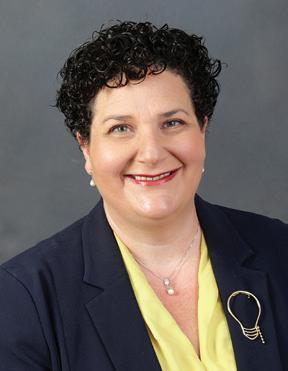
the necessary personnel and equipment, the key ingredients of the mutual aid recipe. These efforts require effective logistics management and experts who fully understand resource allocation and have the know-how to respond under pressure, providing a strong support system for our mutual aid efforts.
ALEC is a nonprofit organization representing the electric distribution cooperatives operating in Louisiana. The Louisiana Electric Cooperatives serve roughly 1 million citizens in 50 parishes. Our mutual aid network, consisting of 26 states working closely with their statewide associations, provides an abundant supply of personnel and equipment when needed most for storm recovery.
Disaster response and mutual aid, crucial aspects of our operations, are managed by electric co-ops and our statewide organizations. These organizations play a vital role in coordination between states, ensuring
Staff
CEO Addie Armato
SAFETY COORDINATOR Ricky Melancon
COMMUNICATIONS AND DIGITAL MARKETING
SPECIALIST Conley Bourgeois
ADMINISTRATIVE ASSISTANT Rhianna Garon
CREDIT UNION
Tanya Carroll, manager
Jody Overhultz, representative
President Dennis Glass
Vice President Michael Heinen
Secretary/Treasurer Roger Dale DeHart
Buxton
Marcotte Lane Davidson
Daniel Berthelot Richard “Dickie” Sitman
Michael Heinen Byron Hardee
Trevor Benoit Roger Dale DeHart
Joe Jarrell Dennis Glass



the source of Louisiana’s
traditions Page 12




BOARD OF DIRECTORS
Donald Bush | District One
Ricky Deggs | District Two
J.R. Hickman | District Three
Alan Dane Slaydon | District Four
Joey Rogers | District Five
Trent Buxton | District Six
Doug Sonnier | District Seven
Diana Backhaus | District Eight
Tommy Cryar | District Nine
BEAUREGARD ELECTRIC CO-OP LEADERSHIP
Kevin Turner | Acting Interim General Manager
Kay Fox | Vice President of Marketing and Member Services
Ashley Mazilly | Vice President of Finance and Corporate Services
Kevin Aycock | Vice President of Engineering and Technical Services
Scott Deshotel | Vice President of Operations and Construction Services
BEAUREGARD ELECTRIC OFFICES
Main office
1010 E. 1st St.
DeRidder, LA 70634
Phone: 800-367-0275
Moss Bluff
975 N. Perkins Ferry Road
Lake Charles, LA 70611
Phone: 337-855-6684
New Llano
12542 Lake Charles Hwy. Leesville, LA 71446
Phone: 337-239-3451 www.beci.org
Volume 41, Issue 4
Louisiana Country (USPS 473-180) is published bimonthly by the Association of Louisiana Electric Co-ops Inc., 10725 Airline Hwy., Baton Rouge, LA 70816, in partnership with Pioneer Utility Resources. Annual Subscriptions: Members $2.30. Nonmembers $5.
Postmaster: Send form 3579 to 10725 Airline Hwy. Baton Rouge, LA 70816.
Periodicals postage paid at Baton Rouge, Louisiana 70821 and additional mailing offices.
With severe weather events occurring more frequently than ever, it makes sense to be prepared. During a prolonged power outage or other emergency, this means having enough food, water and supplies to last at least a few days.
While you don’t have to achieve a level of preparedness that mirrors a survivalist, you can take several practical steps to keep yourself and your family safe.
Even at a modest level, preparation can help reduce stress and anxiety, and it can lessen the impact of an emergency event. We recommend starting with the basics.
Here are general guidelines recommended by the Federal Emergency Management Agency:
• Assemble a grab-and-go disaster kit. Include nonperishable food, water (plan for 1 gallon per person daily), diapers, batteries, flashlights, prescription medications, a first-aid kit, a battery-powered radio and phone chargers.
• Develop a plan for communicating with family and friends through text, social media, a third party, etc.
• Have some extra cash available; during a power outage, electronic card readers and cash machines may not work.
• Store important documents such as birth certificates, property deeds, etc., in a safe place away from the home, such as a bank safe deposit box.
• Keep neighbors and co-workers aware of your emergency plans.
• Fill your car with gas.
• Organize your kit so it is in an easily accessible location that family members know about.
If you have older family members or those with special needs, make sure they have enough medication and supplies for a few days. If they don’t live with you, arrange for a neighbor to check on them.
If a severe weather event is expected, consider having this relative stay with you if feasible; otherwise, call them daily. If you have young children, ensure you have ample formula, diapers, medication and other supplies to weather an outage lasting several days or more.
For families with pets, having a plan in place for your animals in the event of a prolonged outage or an emergency will help reduce worry and stress.
• Bring pets indoors at the first sign of a storm or other emergency. Pets can become disoriented and frightened during severe weather and may wander off.
• Microchip your pet and ensure the contact information is up to date.
• Store pet medical records on a USB drive or in an easy-to-remember location.
• Create an emergency kit for pets (include shelf-safe food, bottled water, medications and other supplies).
At Beauregard Electric Cooperative Inc., we care about your safety. Planning for an emergency today can give you more confidence to deal with severe weather and potential outages in the future.
Beauregard Electric offers its members an opportunity to win the co-op’s Lucky Account Number Contest by publishing four account numbers somewhere on pages 20-21 of Louisiana Country. The account numbers are listed within the story on those pages, not on the magazine cover. To win, you must locate your account number (listed on your electric bill) on these pages and then contact the co-op. To claim your prize, call 800-367-0275 or 337-463-6221 by August 15.

Candidate Ricky Deggs received 747 votes and was elected to serve BECi District 2.
Ricky is a former BECi employee, serving 36 years, and a former teacher for 14 years. He lives in DeRidder and has a bachelor of science and master’s in education from Northwestern State University. Ricky is a member of Out of the Ashes.
Dale Peterson, incumbent director and BECi board member since 2003, received 165 votes.
Candidate Alan Slaydon was elected to serve BECi District 4. Alan received 930 votes.
Alan is a registered respiratory therapist and is certified by the California College for Health Science. He is a member of Smyrna Baptist Church and is also involved in several organizations, including the Smyrna/Cole Cemetery Association where he is the president, Gideons International and the National Cattlemen’s Beef Association.









Stoney Doyle, incumbent director and BECi Board member since 2018, received 204 votes, and Ronnie Jackson received 185 votes.
District 7 Incumbent Director
Doug Sonnier was reelected without opposition.
Doug, an Oberlin resident, has served on the BECi Board since 2000. He is a farmer and attends Oaklin Springs Baptist
Church. He is a NRECA Credentialed Cooperative director, past president of the Allen Parish Police Jury, and former member of Allen Parish Fair Board and Allen Action Agency Board.
BECi would like to thank all candidates for running for the board of directors office in 2024. We would also like to thank Dale for his commitment and service to BECi for the past 20 years and Stoney for his commitment and service to BECi for the past six years.



ABOVE: Association of Louisiana Electric Cooperatives staff gather before a busy day.
RIGHT: From left are Dane Hocott, Washington-St. Tammany Electric Cooperative; Randy Pierce, DEMCO; Addie Armato, ALEC; Joe Jarrell, WSTE; Mike Heinen, Jeff Davis Electric Cooperative; Louisiana’s Department of Agriculture and Forestry Commissioner Mike Strain; Matt Peters, South Louisiana Electric Cooperative Association; Johnny Bruhl, WSTE; and Kevin Turner, Beauregard Electric Cooperative Inc.
BELOW: From left, Randy Pierce, DEMCO; Dane Hocott, WSTE; Mike Heinen, JDEC; Matt Peters, SLECA; and Addie Armato, ALEC, meet with Gov. Jeff Landry’s office to discuss cooperative issues.
Association of Louisiana Electric Cooperatives and members hosted the Taste of Louisiana Cookout for elected officials. The afternoon was spent at the Capitol, meeting with legislators and ended with some Louisiana home cooking.






Louisiana electric cooperative leaders met in April with the state’s congressional representatives in Washington, D.C., to discuss topics important to the member-consumers they serve. The visit coincided with the National Rural Electric Cooperative Association’s Legislative Conference, which welcomes co-op grassroots advocates from across the country to the nation’s capital each year.
CREATE YOUR OWN PERSONAL PLAN + CHECKLIST
I have made a plan to communicate with family members through this out-of-state contact and have asked my family to keep this name and number with them at all times.
Name:
Phone number:
I plan not to evacuate and will go to a friend’s or family member’s home in the area. I have notified them and made all of the appropriate arrangements.
Name:
Address:
Phone number:
I plan to evacuate and will go to a friend’s or family member’s home outside of the area. I have notified them and made all of the appropriate arrangements.
Name:
Address:
Phone number:
I plan to go to a public shelter. City:
I plan to stay in a hotel/motel as far north of I-10 as possible.
Name of hotel/motel:
Phone number:
Location and city:
Alternate hotel/motel location north of I-10.
Name of hotel/motel:
Phone number:
Location and city:
I have calculated the driving time to my destination north of I-10 at approximately four (4) times the normal driving time, and it is: hours.
I have studied the evacuation route that best suits my needs. My evacuation route will include the following:
If our family is separated and we need to regroup, the following location is where we will meet:
I have made plans for my special needs family members. My plans are the following:
I have made plans for my pets. My plans are the following:
Source: Lousiana Get a Game Plan 2016 Emergency Guide, www.getagameplan.org
I have completed my property inventory and placed it in a safe waterproof place. Location:
I have made an assessment of my insurance needs. I have the following:
Pictures of Important Documents Pictures of Property & Contents
Insurance information: Name of company, agent, phone number and address:
I have completed the necessary precautions for the following:
Exterior windowsLarge windows and glass doors
Garage doors
Roof protection
Roof gable ends
Indoor hazard protection plan
Outdoor propertyTrees protection plan
I have identified any anticipated extra expense due to a disaster, and I have calculated an approximate amount of money that will be required to see my family and myself through. That amount is:



By Cheré Coen
When her pan-seared red drum over tomato polenta with a crawfish cream sauce earned Amanda Cusey the 2022 Louisiana Seafood Queen title, many people likely thought the Lake Charles chef was a Bayou State native. However, Amanda’s life and career have taken her around the world, landing her in Louisiana only because her parents found work in the Lake Charles area.
from
“Butter makes everything better.”
“Don’t be afraid to try something new, and don’t be afraid to fail. And don’t be afraid to be weird.”


“Don’t overcook seafood. Seafood can be very delicate. If undercooked, you can always bring it back up.”

Originally from Flagstaff, Arizona, Amanda was living in North Carolina when her parents, both Chicago natives, encouraged her to join them in England, where they lived at the time. She accepted their offer and attended Cordon Bleu training at Tante Marie Culinary Academy in Surrey.
Amanda later worked in English gastropubs, an American diner in Ireland, and under chefs Kristan Burness and Brendan Ward at Fiorentina in Dublin, where she ultimately earned the head chef position. She worked briefly with Michelin star chef Oliver Dunne at his Italian-inspired pop-up restaurant, Eatily, in Dublin’s city center. When Amanda’s parents grew tired of cold English winters, they began planning their return to the States. An engineering job brought them to Lake Charles, and Amanda followed. At first, the Southwest Louisiana town took some getting used to, but the hospitality Acadiana is known for quickly won her over.


























































“It’s quite grown on me,” Amanda says.
She first developed traditional Italian dishes inspired by her years in Europe to mix with Louisiana influences at The Villa in downtown Lake Charles. Now, she helms the kitchen at The Terrace restaurant at Lake Charles’ Family Entertainment Center, melding her European training with local dishes, flavors and ingredients.
The casual restaurant allows Amanda to bring her elevated cuisine to the masses. Dishes include shrimp and grits, fried blue oyster mushrooms with house-made garlic aioli, flatbreads, and fried shrimp coated in Bayou Satsuma Rum and toasted coconut.
In addition to her seafood title, Amanda was also awarded the title of Best Chef in Lagniappe magazine’s Best of SWLA awards, which was voted on by readers. She is the second woman to earn this recognition and the first Lake Charles chef.
She also headed to Charlotte, North Carolina, with chef Lyle Broussard of L’auberge Casino Resort of Lake Charles in 2023 to be paired with North Carolina chefs in a restaurant takeover experience.
The accolades have been “surreal, a really cool experience,”
Amanda says.
Seeing Lake Charles’ culinary scene grow during the past eight years has also been rewarding.
“It’s been cool to watch,” she says. “The city’s definitely got a whole lot going on.”



















½ cup red peppers, diced
½ cup shallots, finely diced
1 pound Louisiana lump crabmeat, cleaned
1-2 lemons, depending on size, zested and juiced
¼ cup parsley, chopped
2 tablespoons garlic, freshly minced
2 teaspoons Cajun seasoning
1 cup panko breadcrumbs
¼ pound butter, melted
Salt and pepper, to taste
2 tablespoons oil
Saute the peppers and shallots until just tender. Add to a mixing bowl and combine with the rest of the ingredients. Adjust seasoning as needed. Cover and refrigerate for about an hour. Remove from fridge and form cakes to your desired size. Heat the oil and pan sear each side of the cakes until golden brown. If you made large cakes, you may need to pop them in the oven to heat them completely through.







































































































By Cheré Coen





























Louisiana is rich in culinary traditions, but how often do you consider where some of the tastiest ingredients originated? It’s even less common for people to experience these rich agricultural traditions firsthand. Fortunately, there are many opportunities throughout the state for folks to delve deeper into our food sources.






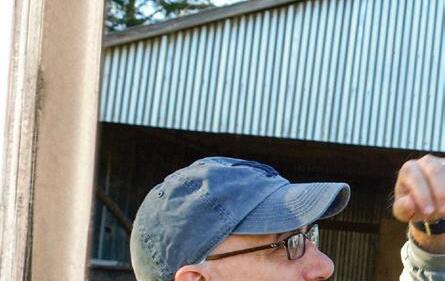






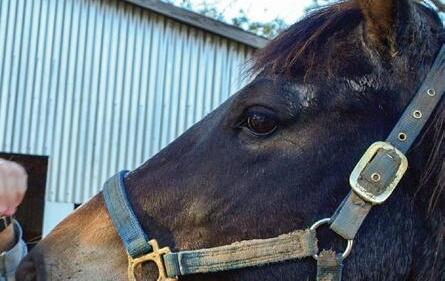





In the growing segment of the travel industry known as agritourism, participating businesses offer visitors a chance to immerse themselves in the agrarian way of life—whether milling rice, trapping crawfish or making hot sauces. From charming family-owned farms that offer accommodations to you-pick farms, destinations across Louisiana invite travelers to experience the rhythm of rural life, savor farm-fresh produce and engage in hands-on activities that celebrate the region’s agricultural traditions.





Breaux Bridge is a short drive from Lafayette, but Bonne Terre Farm feels like another world. This tranquil 10-acre working farm offers two quaint residences to choose from for an overnight stay. Guests can lounge in accommodations stocked with locally made amenities such as soap, fresh eggs, condiments and artwork. Owner Jennifer Gray is a Louisiana ambassador who loves sharing the state’s cultural offerings, and she often takes her guests on guided walking tours of the farm.


Jennifer loves her animal friends, and it shows. Visitors who stay at Bonne Terre don’t have to tour the farm, but Jennifer is happy to introduce them to her turkeys, horse, cow, geese and other friendly


























critters. On a scheduled tour, she expresses her appreciation of animals and the environment, believing immersion in a natural setting might be just the cure for many of modern life’s ills.









“It is a beautiful thing,” she says. “Animal therapy is a true science, and people benefit from it.”
Bonne Terre Farm, French for “good earth,” is for adults only. For more information, visit bonneterrelouisiana.com.


Other farm stays: Splendor Farms in Bush offers guest accommodations along with horseback trail riding, riding lessons and a petting farm. For more information, visit splendorfarms.com.



SonLight Farms in Bogalusa lets visitors pick their own blueberries or, if you’re feeling less hands-on, you can buy the fruit pre-picked and packaged. The family-owned and operated farm grows blueberries without chemicals. Be sure to call ahead,
information, call 985-241-0910 or visit the farm’s Facebook page.
Other berry-picking farms: Landry-Poche Farms in Springfield offers field trips for students and parents in the spring and an annual Family Fun Day. For more information, visit landrypochefarms.weebly.com.






Bachman Blueberries in Bush supplies a bucket, and you pick the berries. The season ends midsummer. Be sure to wear closedtoe shoes and bring water, bug spray and sunscreen. Visit the Bachman's Facebook page for updates.


Just north of Kaplan, Barry Toups takes visitors and residents out to his crawfish ponds, where he explains the business of raising Louisiana’s favorite crustacean. After the tour, visitors can enjoy their caught bounty boiled and served.
Barry is the proprietor of the circa-1903 Crawfish Haven/Mrs. Rose’s Bed and Breakfast, which offers three guest rooms. His tours put visitors in boats puttering through his ponds to retrieve what will be their supper. He fits six people in a boat at a time and pulls up 50 to 100 traps. Afterward, he boils the crawfish and serves up 5 pounds per person.


“We explain all about the life of the crawfish,” Barry says. “It’s very educational. The whole process is two to three hours, depending on how many questions they have.”











































Barry’s crawfish excursions run December 1 through midMay or June 1, depending on that year’s crop. This year was more sparse than usual due to last summer’s drought. He speaks French, so many of his clients hail from across the Atlantic.






Barry’s tours have become so popular, he’s been on many television shows and in The New York Times Magazine. For more information, visit www.crawfishhaven.net.
Other crawfish tours: Jeff Davis Parish Tourism offers crawfish tours that take visitors from the boat to the processing plants. For more information and to book a tour, visit jeffdavis.org/tourism.









Team Voodoo Crawfish Tour is offered near Breaux Bridge. For information, visit www.crawfishtours.com.
Tabasco


The same pepper sauce recipe used by Edmund McIlhenny back in the mid-1800s is still used today at Tabasco’s factory on Avery Island outside of New Iberia. Visitors to the factory get to watch the blend of Tabasco peppers, salt mined from Avery Island and high-quality distilled vinegar aged in white oak barrels create one of the world’s most recognizable brands.



transmission. Attendees see much of the mill’s original equipment, view a slide presentation of Acadian history and browse the Konriko Co. Store that sells cookbooks, crafts, Cajun music and local food products, including Konriko rice fresh off the mill.











Visitors also learn about Tabasco history and artifacts, view the pepper-growing process, get a look at the aging process in the mash warehouse and sniff from the vats where the magic happens. The factory compound also includes a restaurant and gift shop. For information on the self-guided tours, visit www.tabasco.com.


New Iberia is home to America’s oldest operating rice mill, and a tour shows visitors how rice milling came about.
Conrad Rice Mill was built in 1912 and is an example of the factory’s use of a turn-of-the-century belt-driven power




Tours are offered on the hour between 10 a.m. and 3 p.m., Mondays through Saturdays. Learn more at www.conradrice.com.
“It’s remarkably interesting for a short tour,” says New Iberia author Lynn Shurr, who brings visiting guests there. “There is also a good movie beforehand, free samples of coffee and food in the store and the best assortment of souvenirs in the entire town.”





There’s a stretch of northwest Louisiana where sunflowers grow tall and wide. Folks in this region honor this bright, sunny flower every June with the annual Sunflower Trail and Festival in Gilliam, but visitors can enjoy the bright yellow blooms throughout the summer by driving the Sunflower Trail.
This scenic drive along Route 3049 and Sentell Road, south of Belcher, features a sunflower maze, wildflower fields, zinnia blossoms and historic stops, including the Veterans Memorial in Belcher, Crossroad Museum in Gilliam, Northrose Plantation in Dixie and more. Sunflowers along the trail are in full bloom and are expected to last through July.










ALEXANDRIA
Alexandria Farmers Market


NEW ORLEANS
Crescent City Farmers Market







3-6 p.m. Tuesdays, 2727 Jackson St.
LAKE CHARLES
Charlestown Farmers Market
8 a.m.-noon Saturdays, 1001 Ryan St.
Cash & Carry Farmers Market
4-6 p.m. Tuesdays, 801 Enterprise Blvd.
SHREVEPORT


Shreveport Farmers Market
7:30 a.m.-12:30 p.m. Saturdays, through Aug. 24, Festival Plaza, 101 Crockett St.
St. Francisville Farmers Market
8 a.m.-noon Saturdays, barn at 9961 Wilcox St.


New Orleans markets are held weekly at City Park, Uptown Square and Mid-City. Details are online at www.crescentcityfarmersmarket.org.
Red Stick Farmers Market


Year-round markets are Thursdays: 8 a.m.-noon, Pennington Biomedical Center, 6400 Perkins Road; Saturdays: 8 a.m.-noon, North Fifth and Main streets, downtown Baton Rouge. Seasonal markets are 3-6 p.m. Tuesdays at the East Baton Rouge Parish Library, 7711 Goodwood Blvd; and 9 a.m.noon Wednesdays at the Exxon Mobile YMCA, 7717 Howell Blvd.





Natchitoches Farmers Market




8 a.m.-noon Saturdays, through July 27, 100 Rue Beauport
Houma’s Market at the Marina
8 a.m.-noon, first Saturday of the month, downtown Houma Marina
LAFAYETTE





Lafayette Farmers & Artisans Market
8 a.m.-noon Saturdays, Moncus Park











































Weatherizing your home provides energy savings and comfort yearround, especially during summer months when your air conditioner is working overtime.
A home with insufficient insulation and air leaks wastes more than 20% of the energy used to heat or cool the home, according to energystar.gov. Fortunately, most weatherization projects are DIY and can be completed in a day.
The simplest and most cost-effective weatherization strategies include air sealing around windows and exterior doors.
If you have older windows, odds are you have air escaping through cracks and gaps around the frame. If you can see daylight around the frame or if the windows rattle easily, you likely have air leaks. Also check for small cracks around the frame that may not be visible with sunlight.
If you suspect you have leaky windows and plan to apply new caulk, be sure to remove the old caulk and clean the area before application. Caulking materials vary in strength and properties, but you’ll likely need a half-cartridge per window.
Silicone caulk is a popular choice and can also be used to seal joints between bathroom and kitchen fixtures.
Another effective but simple weatherization project is installing weatherstripping around exterior doors. The most common types of
weatherstripping options are V-channel, felt and foam tape. Choose the best for your home by considering temperature fluctuations and weather exposure. Most homeowners opt for felt or foam tape; both are easy to install but need to be replaced every couple of years, depending on wear and tear. Weatherstripping should be installed around the top and sides of the door.
If you see daylight around the bottom of an exterior door, consider installing a door sweep in addition to weatherstripping.
Weatherstripping can also be installed around windows.
Another way to improve comfort in your home is with insulation. While this is a more costly project and requires a professional’s help, it’s an effective way to decrease heat flow.
Older homes may need additional insulation to replace older materials or meet newer efficiency standards. Contact a qualified installation specialist if you suspect insulation levels are inadequate.
The best way to identify air leaks in your home is a blower door test. A blower door test helps determine how airtight your home is and identify air leaks.
In addition to saving energy, air sealing can help avoid moisture control issues, improve indoor air quality and extend the life of your heating and cooling system. Weatherize your home to unlock yearround comfort and savings on monthly energy costs. n

“The unoffended life is the best way to live.”
What is the unoffendable life?
It’s the mark of a person who doesn’t easily get bent out of shape. They don’t carry a chip on their shoulder. They let offenses roll off their back and choose to overlook slights—real or perceived.
In the rest of this article, I’ll use the pronoun “he” for clarity, but this asset applies equally to everyone.
The unoffended person chooses not to hold grudges. He understands, “If you like people, people will like you.” He realizes relationships always trump harsh words.
The unoffended man is good-natured. Webster’s dictionary describes goodnatured as “having a pleasant disposition and displaying an easygoing manner, especially in social situations.”
The unoffended man oozes graciousness. Listen to Paul’s words in Colossians 4:6: “Let your speech always be gracious, seasoned with salt, so that you may know how you ought to answer each person.”
You ask, “What is the definition of graciousness?”
You’ll know when you see it.
My father, Clayton Iles, lived 1934-2003 and was a gracious and unoffended man. I keep returning to my daddy because he was remarkable and still lives through my writing, as well as through four Iles generations.
He had all the traits of an unoffended man: self-effacing, forgiving and unerring in his belief in seeing the best in others.
Above all, he was comfortable in his own skin wherever he went.
He would’ve been as relaxed and winsome in the Oval Office as he was at the Dry Creek Community Catfish Lunch. In either venue, if asked, he would’ve burst out in his favorite song (and mine as well), “The Wayfaring Stranger:”
I am just going over Jordan. I am just going over home.
Let me be clear: Clayton Iles wasn’t perfect, but he was consistent. My father at home was no different than in public. I can honestly say that when he died, he did not have one single enemy.

That says a lot.
The unoffended man doesn’t fly off the handle. To become an unoffended person takes practice. It’s a habit like any other.
I’m still working on it. I have a ways to go.
One way I’m learning to be unoffended is the part of writing I detest: rejection letters. It’s part of the life of a professional writer. You’ll have a stack of these letters if you’re sending out proposals.
I’ve learned not to take it personally. To accept it with graciousness.
Send a note to the editor. Trying to glean anything from them and their rejection that can teach me.
You have no friends. You have no enemies. You only have teachers.
I’m learning to accept life’s setbacks and difficulties with a smile: “Oh, don’t worry about that. I’ll just put it in the next book.”
How you look at something goes a long way toward being unflappable and unoffendable.
The confident, unoffended man doesn’t have to get in the last word. Sometimes, he chooses to bite his tongue. He knows that sometimes, the best answer to ignorance is silence.
Because silence can speak volumes.
Living an unoffended life is not a sign of weakness. It doesn’t entail being run over, pushed around or exploited. It’s a sign of inner strength and peace.
The unoffended man knows there are hills to die on. There’s a time and place to dig in and take a stand.
But he understands these battles are few and far between, so he chooses his
battles carefully.
There’s no chip on his shoulder.
He attempts to cut people slack, remembering folks often act a certain way because they have a rock in their shoe.
He chooses his reactions to people and events. When confronted with road rage, he’ll give a sad shrug followed by, “I bet he’s hell to live with,” or an equally strong, “I’d hate to be married to her.”
Richard Carlson’s book “Don’t Sweat the Small Stuff” speaks of this concept of being unoffendable.
Take note of the full title: “Don’t Sweat the Small Stuff (and It’s All Small Stuff).”
The unoffendable person overlooks the small irritations of life.
I close with several lines from my favorite Jerry Jeff Walker song, “The Stranger.”
He was the kind who’d pay no mind When he was bumped into.
He was the kind that let you find out All that he knew.
He never got uptight, never started a fight, Never threw so much as a dart.
He was a man after my own heart.
And I loved him.
I loved him true.
(Lyrics by Jerry Merrick)

Curt Iles lives in Central Louisiana. He is the author of 11 books about rural Louisiana. Curt is a graduate of Louisiana College and McNeese State University. He has served as a teacher, coach, school principal, camp director, missionary, and full-time writer and speaker. To see more work by Curt, visit www.creekbank.net.






























In today’s digital age, utility scams are on the rise, targeting consumers of water, gas and electricity. Scammers are becoming more sophisticated, exploiting technology to deceive people through various means, such as phone calls, texts, emails and deceptive websites.
Here’s what you need to know to protect yourself:
Recent scams include imposters posing as utility representatives, demanding immediate payment to avoid service disconnection. They may also claim you’ve overpaid and offer a refund in exchange for personal information.
Spotting a scam involves watching for high-pressure tactics, unusual payment requests—such as gift cards or cryptocurrency—and signs of poor communication quality, such
as misspellings and incorrect grammar.
Do not make instant payments or share personal information over the phone or via email. Your co-op provides secure payment options and never demands immediate payment or requests sensitive details via these channels.
If you’re unsure about a communication claiming to be from your co-op, hang up and call the office directly to verify.
To avoid scams, be cautious of unknown individuals requesting personal information, and report any suspicious activity.
By staying vigilant and communicating with your utility provider, you can help protect yourself and your community from fraud. n

By EmmaLee Tingle
Wesley Taylor and Brian Stuart, business partners of Fortune Forest Products in DeRidder, have
made a living by keeping relationships at the root
of
their
timber business.
When Wesley graduated from Louisiana Tech University’s forestry program, he knew he wanted to start a timber business. The Dry Creek native settled with his
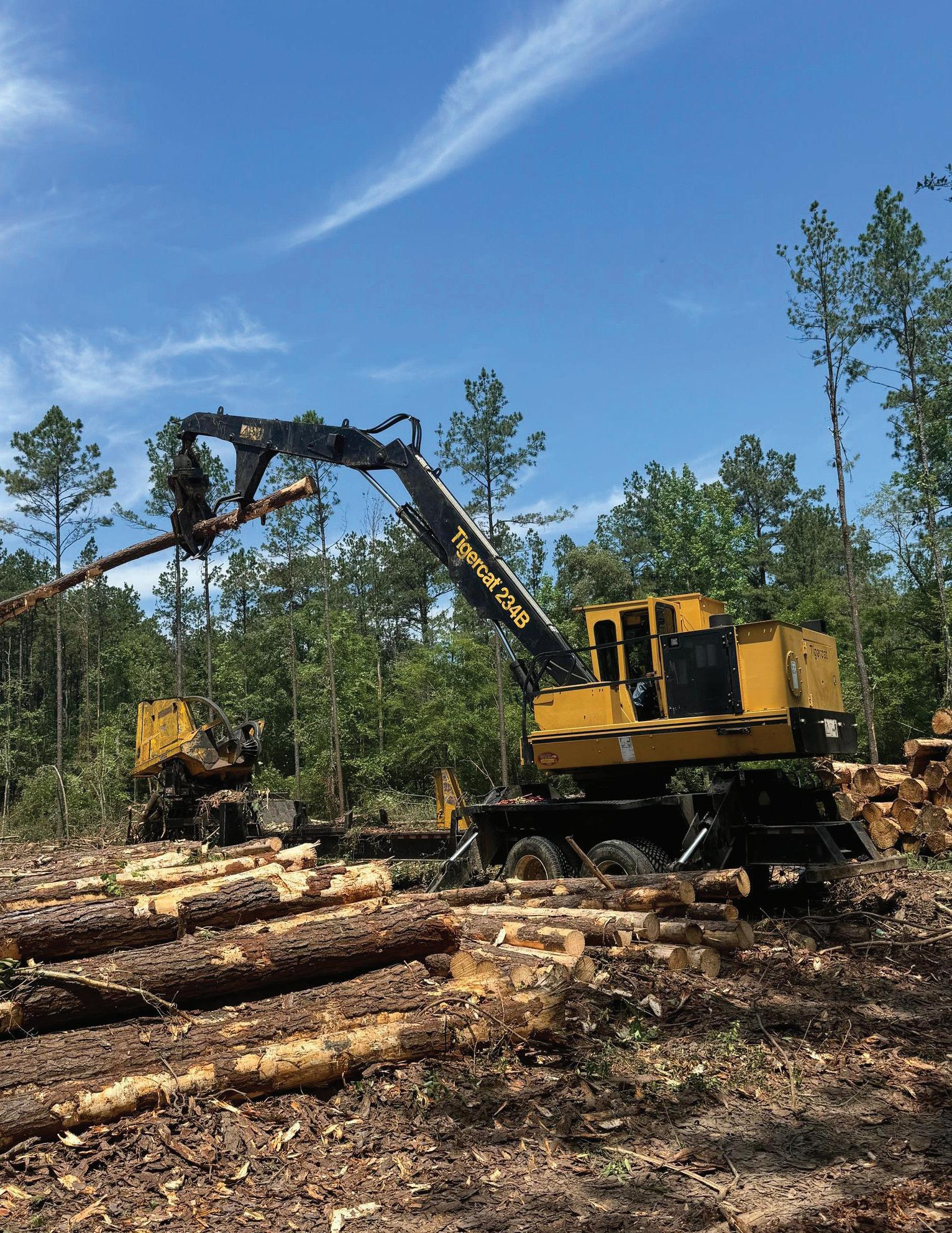
wife, Amber, in DeRidder and started buying timber. Within a couple of years, Wesley’s business grew so much that he could not keep up with it alone. Fortunately, he had a connection. A classmate from college had a brother, Brian, who graduated from the same forestry program a few years before. Account No. 94593002
In short order, Wesley and Brian decided to join forces as business
partners. In 2001, Fortune Forest Products was born.
“We’ve never once had a cross word,” Wesley says of his relationship with Brian.
A career in timber was seemingly in the blood for both men. Brian, a Mississippi native, had a logging contractor for a father. His father-in-law made a living as a forester, and his brother owns a timber and logging business in Mississippi. Wesley’s father-in-law was also a forester, and his grandfather was a timber man.
For 23 years, Wesley and Brian have worked as timber buyers and wood dealers to make Fortune Forest Products a successful company.
When a timber tract is for sale, they visit the land and inspect the timber. They purchase the timber from the private landowner or through a timber consultant managing timber on behalf of the landowner. Depending on the final product the timber will be used to produce, they make a deal with one of eight area mills. Each mill has a specialty.
After buying the timber, they contract with logging firms to cut and merchandise it. Logging contractors cut, skid and load the timber, then deliver it to the mill. Brian also owns Stuart Wood Company, a logging contractor company with multiple crews.
Fortune Forest Products and Stuart Wood Company often work together on timber harvest projects. Account No. 164898001
“We have a lot of repeat business because we’ve built good relationships with landowners and timber consultants,” Wesley says. “We’ve built this business on word of mouth.”
For many years, Fortune Forest Products’ focus was on standing timber with a specific process in mind. The timber would go through a “first thinning” to remove what was ready for market. After five to seven years, the timber would be ready for a “second thinning” for marketable timber. After another several years, the land would be clear-cut of all remaining timber.
After the timber was sold and the land was cleared, the site would be prepared and replanted to begin the cycle again.
In recent years, the company has widened its focus to new products, such as logs, pulpwood and poles, because several factors have negatively affected the timber market.
Wesley says the recent drought caused mills to be full, resulting in lower timber prices. During a drought, logging crews can get to places that are typically wet to harvest timber. Crews get more production, which results in an overabundance of product on the market. This causes mills to cut back on deliveries and offer lower prices for the timber because there is plenty of product. Account No. 141128002
A rise in current interest rates has slowed down the building market, adding to the hard market for timber products, Wesley says. Timber damage from hurricanes Laura and Delta also had a negative impact on timber. Because of these conditions, many landowners and timber consultants are waiting for the market to improve before placing timber tracts on the market.
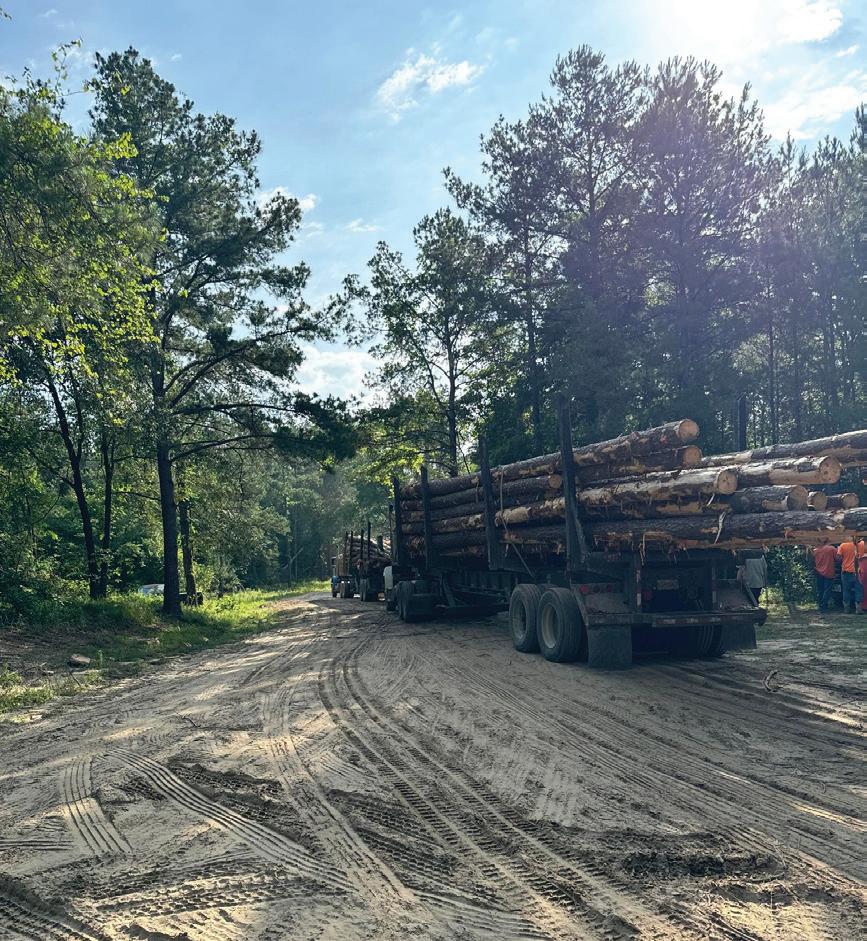
No matter what happens in the timber market, Wesley and Brian know they can count on family, and they now have two new family members in the business to help maintain and grow the success of the partnership.
In the past three years, Brian and Wesley’s sons, Tommy and Parker, respectively, graduated from Louisiana Tech’s Forestry program and joined the business. Parker focuses on the timber buying side, and Tommy spends most of his time and attention on the logging side.
“We will both probably always be involved, but Parker and Tommy are gaining more and more responsibility every day,” Wesley says. “I hope they are fortunate enough to continue doing this for a long time.”
Although the father-son pairs make up the full-time employees of Fortune Forest Products, there is also plenty of family help in the office. Brian’s wife and daughter, along with Tommy’s wife, handle office communication, scheduling, organization, ticketing and landowner payments. Account No. 160120001
From the outside, Fortune Forest Products is a timber business. Wesley and Brian know that on the inside, it’s a business built on the foundation of solid relationships and generations of continuing family ties. n

Have you ever watched a video or TV show where a person is cooking a meal, then suddenly they snap their fingers and the meal is plated and ready to eat? That’s called a jump cut. While everyone wishes we could “jump cut” from a power outage to power restoration, it often takes a lot more effort and people to make it happen.
It’s natural for members to have questions about power outages and why it can take time to get the lights back on. Given our reliance on electricity, there’s simply never a good time to be without it.
Here’s a behind-the-scenes look at the restoration process to help members understand what may be happening when the power is out.
1. 2. 3.
We rely on you to let us know if your power is out. When your power goes out, it might be just at your home or a small section of your neighborhood. There is a chance your cooperative may not know about it, and no one has reported it.
When you’re without power, co-op employees might be, too. Because we are local electric cooperatives owned by the members we serve, employees are local. They are your neighbors, friends and familiar community volunteers. It’s a team effort. Every co-op employee works to get power restored as soon as possible. Member service representatives take your calls, engineers and field staff survey damage, the vegetation management team clears hazards, dispatchers organize crews, and communicators keep everyone informed of progress or potential dangers. When the power goes out, everyone on the team works together as quickly and safely as possible to restore it.
4. 5. 6. 7. 8.
Assess the situation. Every outage is different, and in the very beginning it’s hard to know how dangerous it is or whether equipment might need to be replaced. When responding to outages, the first step is to see what happened, then figure out which materials are needed and then create a plan for how to fix the problem(s) without compromising electric flow for the rest of the members.
Restoration is normally prioritized by the largest number of members that can get back on in the shortest amount of time. Crews focus on responding first to public safety issues and critical services such as hospitals. Then work is completed that impacts the largest number of people first.
Co-op employees face many dangers. Besides working around high-voltage electricity, crews are on alert for wild animals, weather elements, falling trees and fast-moving cars. If you ever drive past a utility vehicle, please do so slowly.
Flickering lights are a good thing. Some folks mistake flickering lights for outages, but these “blinks” are important because they indicate the equipment worked and prevented a possible outage likely caused by wayward animals or stray tree limbs on the lines. You need a backup plan. If you depend on electricity for life support purposes, you must have a backup plan. Remember, it’s not always known how long restoration efforts will take.
9.
Employees have to plan and eat. If you ever see co-op trucks in a restaurant parking lot while your power is out, know that sometimes employees huddle in a safe, common area to map out the strategy for getting the power back on. Also, crews work long, hard hours during outages and need to take time for meals, just like everyone else.
10.
Sometimes it’s a waiting game. Each portion of the power grid is connected to other electric utilities, and positive relationships are maintained with power providers interconnected to our system. If an outage is due to an issue from their feed into the system, they must repair it.
Periodic power disruptions are inevitable. If the lights go out, know your co-op team is working as quickly and safely as possible to restore power.
There is never a good time for the power to go out, but if it happens on a sunny day, you might be left wondering why. Here are the most common causes of a power outage.
High winds, snow and ice can cause tree limbs to fall on power lines. Other weather effects, like wildfires and lightning strikes, can cause major damage to equipment.
Squirrels, birds, snakes and other animals can inadvertently contact power lines, causing short circuits and disruptions to electrical supply.
Scheduled
Occasionally, we plan outages to perform upgrades or repairs to parts of the local grid. MAINTENANCE
Vehicles can crash into utility poles, bringing down power lines. Construction and excavation work can also result in disruptions to underground lines.



















































